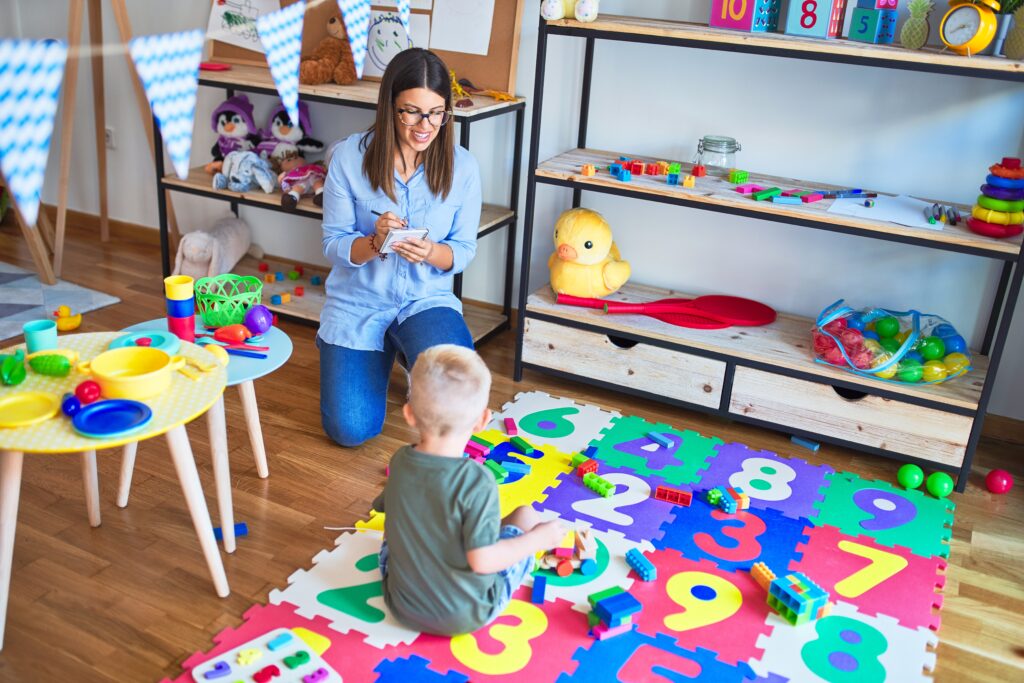Conquer Sleep Problems in Children with Autism: A 5 Step Guide to ABA Technique
Introduction
Parents of children with autism, you’re not alone in facing sleep challenges. Getting a good night’s sleep is vital for our children’s development and health, but sleep problems are prevalent among children on the autism spectrum. However, Applied Behavior Analysis (ABA) therapy – backed by years of research and practice – offers effective techniques that help autistic children establish healthy sleep patterns. In this blog post, we’ll explore the relationship between autism and sleep, and how ABA techniques can pave the way to restful nights.
Why Sleep Matters: The Unique Challenges Children with Autism Face

Before we dive into solutions, it’s important to understand the underlying causes of sleep difficulties in children with autism:
- Sensory Sensitivities: Children with autism often have heightened sensitivity to stimuli – noises, lights, even the feel of certain fabrics can be overwhelming. This makes creating a truly calming sleep environment a nuanced task.
- Anxiety and Restlessness: Elevated anxiety or hyperactivity can make it exceptionally difficult for a child with autism to wind down and prepare their mind and body for sleep.
- Disrupted Melatonin Production: Melatonin, the hormone regulating our sleep-wake cycle, can be naturally disrupted in autistic children, contributing to irregular sleep patterns.
- Gastrointestinal Issues: Gastrointestinal problems, which are more prevalent in the autism community, can cause physical discomfort that disrupts sleep throughout the night.
- Medication Side Effects: Some medications used to manage autism-related symptoms might have unintended side effects on sleep quality.
The Power of ABA: A Personalized Toolkit for Sleep

ABA therapy focuses on understanding the function of behaviors and then implements strategies to encourage positive changes. When applied to sleep, this approach looks like this:
Step One: Crafting the Ideal Sleep Environment
- The Bedroom as Sanctuary: Transform your child’s bedroom into a sleep haven. Keep it consistently dark (blackout curtains are your friend!), quiet, and set at a comfortable temperature. Consider a white noise machine to mask potential disturbances.
- Sensory Considerations: Choose soft, breathable bedding in textures your child finds soothing. A weighted blanket may offer the right kind of calming pressure.
- Technology Timeout: Avoid screens (TV, tablets, phones) at least an hour before bed, as blue light exposure can suppress melatonin production.
Step Two: The Magic of a Consistent Bedtime Routine
- Power of Predictability: ABA thrives on predictability. Create a step-by-step bedtime routine that’s the same each night: bath, putting on pajamas, brushing teeth, reading a story, and finally getting into bed.
- Visual Cues: Use a visual schedule with pictures or a simple written list to illustrate the routine, giving your child a sense of control and understanding.
- Relaxation Techniques: Incorporate calming activities before bed, such as a warm bath, gentle massage, listening to soothing music or nature sounds, or reading a favorite story.
Step Three: Positive Reinforcement – Your Secret Weapon
- A Rewards System to Motivate: Design a rewards system for following the routine and staying in bed. Remember, rewards can be small – stickers, extra playtime with a beloved toy, or a special bedtime story.
- Social Stories as Learning Tools: Social stories are short, illustrated narratives that explain situations like bedtime. They can enhance your child’s understanding of expectations and help them feel more at ease with the process.
Step Four: Tackling Specific Sleep Issues with ABA Therapy
ABA therapists are skilled at tailoring interventions to your child’s unique needs:
- Gradual Fading for Independence: If your child depends on your presence to fall asleep, your therapist can teach you fading techniques. This involves gradually decreasing your presence over time, encouraging self-soothing skills.
- Extinction Strategies for Nighttime Waking’s: For children who wake frequently, extinction methods may be used. This might involve brief reassurance when they wake, followed by leaving the room, fostering self-soothing back to sleep.
- Addressing Medication Concerns: Openly communicate with your child’s doctor about any worries regarding how medication may be impacting sleep. They can adjust dosage or suggest alternatives if needed.
Finding the Best ABA Therapy in Atlanta, or Savannah, Georgia for Sleep Solutions

When searching for an ABA provider therapy in Atlanta, or Savannah, Georgia, there are a few key qualities to look for:
- Expertise in sleep issues: Ask about the provider’s experience in addressing sleep challenges in children with autism.
- Board-Certified Behavior Analyst (BCBA) credentials: BCBAs are certified professionals with specialized training and expertise in ABA therapy.
- Collaborative approach: Choosing a provider who works closely with you, the parent, in understanding your child’s sleep habits and challenges is vital to success.
ABA Therapy Services at Kids Club ABA
At Kids Club ABA, we proudly offer personalized ABA therapy services to families in Savannah, Atlanta, and throughout Georgia. Our team specializes in addressing a wide range of challenges, including sleep solutions.





